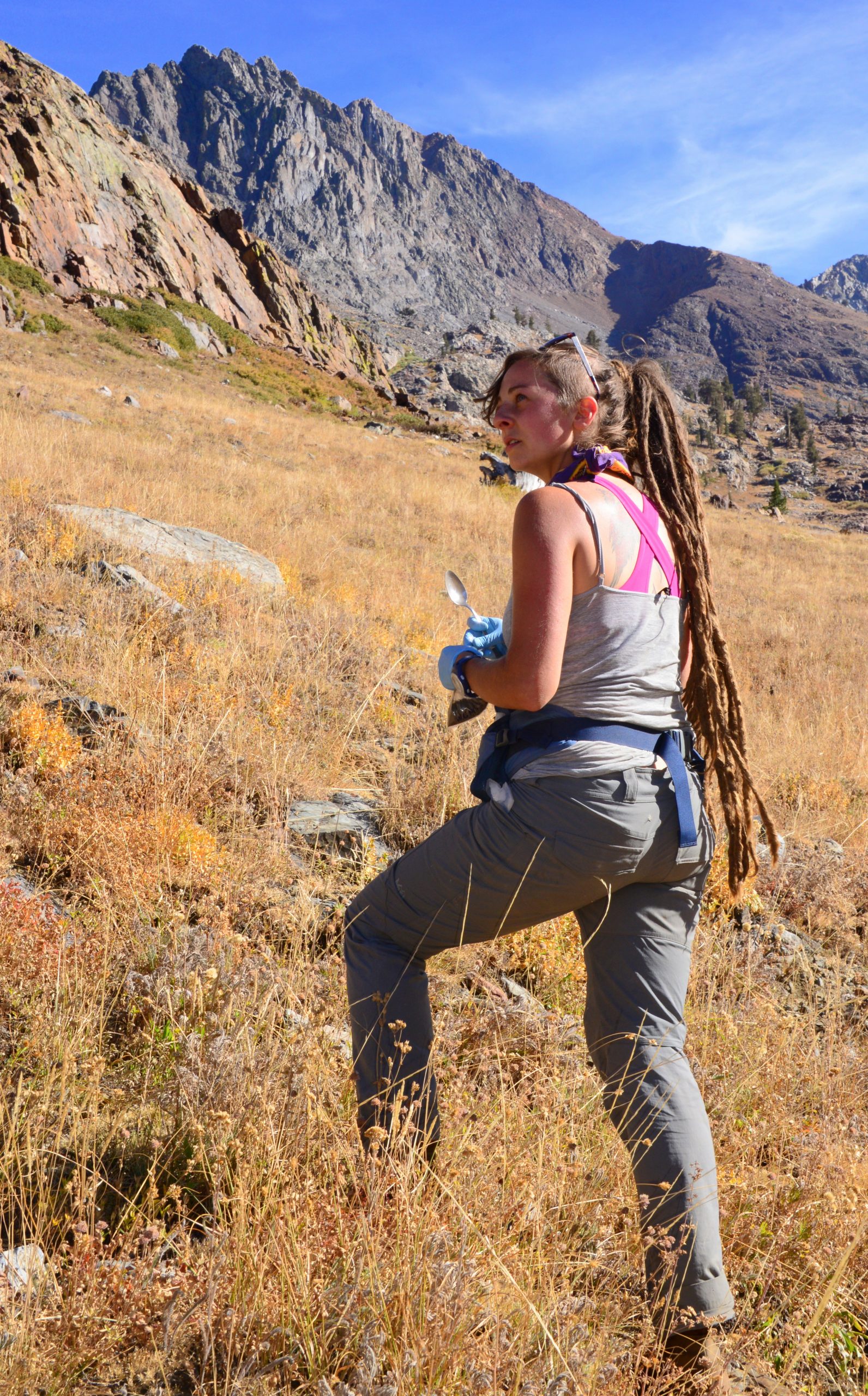
Jillian Myers is a PhD candidate in the Department of Ecology and Evolutionary Biology at the University of Michigan. She received her Bachelor’s degree, with an Honors Thesis, Synergistic inhibition of the lethal fungal pathogen Batrachochytrium dendrobatidis: The combined effects of symbiotic bacterial metabolites and antimicrobial peptides of the frog Rana muscosa, from James Madison University in 2011. Currently her research interests are ‘all things mycoviral’. As a NSF Graduate Research Fellow studying in the lab of Timothy James, Jill is digging into some basic questions: How common are mycoviruses throughout the fungal kingdom (with particular focus on Chytridiomycota, Blastocladiomycota, and Zygomycota. These groups have been almost entirely disregarded in the mycoviral literature.)? What are the origins of mycoviruses? How do mycoviruses alter the phenotypes of their host fungi?
How did you become a mycologist?
I’m still working on “becoming a mycologist”. However, I started studying fungi when a professor at my undergraduate institution reached out to me, asking if I’d like to work in his lab. At the time I was not yet a matriculated student, and still not totally convinced I wanted to get a Bachelor’s degree. ‘d recently finished an Associates and was “dipping my toe” into higher education by taking one course at a University. I didn’t know undergrads could even do research, but when Professor Reid Harris presented the opportunity to study the frog-killing chytrid, Batrachochytrium dendrobatidis, I knew I wanted in. By reaching out to me, Dr. Harris changed my life, starting me along a trajectory I hadn’t known existed! I think about this a lot. That being said, it wasn’t until joining Tim James’ lab that the big, beautiful world of mycology opened up and I realized I don’t just want to be a scientist or a researcher, but a mycologist!
Who is your mycology role model?
At UMich, we’re surrounded by the legacy of Alexander Smith, and I’m completely amazed by his prolific contributions. I also love hearing stories about his commitment to public engagement- he’s an even bigger man in my mind because of that.
What is your favorite mushroom, and what do you like about it?
I’m really into Chlorociboria right now. I can’t get enough of that color!
What is your favorite characteristic of fungi?
I love that fungi seem to break all the rules. That’s another reason I love fungal viruses, too. Viruses are “supposed” to cause disease, they’re “supposed” to kill their hosts- but not in fungi! Not only does this rule-breaking appeal to my inner teenager, but I think it’s impetus for real scientific progress.
Do you have any interesting stories about field work?
I did field work in the Sierra Nevada range this past summer. At the San Francisco Airport, I was chatting with the agent who was helping me get my rental car to take with me into the field. I told him I was going to the mountains to do some science and backpacking. He stopped typing, turned to look me in the eyes, and said quietly, “Backpacking changed my life.” He told me his life tale of heading down a bad path as a teenager before he was sent away to a wilderness school, which set him right. “And look at me now!” he said, proudly. As he finished my paperwork, he complimented my very long dreadlocks, told me he was going to give me an upgrade, and said, “I’ve got just the thing for you.” The brand-new Volkswagen Beetle (turbo!) he hooked me up with was far from the ideal field vehicle for mountain terrain, but bonding with a stranger over his transformative experience in nature was priceless!
What do you like to do in your free time? What are your hobbies?
I spend most of my free time with my hound dog, Mouse. We do a lot of canoeing together when the Michigan winter isn’t happening. I also enjoy getting crafty with paper or fabric, and enjoying fermented beverages with pals.


Leave a Reply